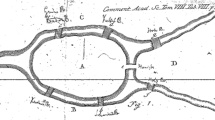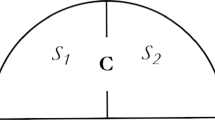Abstract
This paper is mostly about the role of modal system S5 in conceivability arguments against, as well as in the defense of, different versions of physicalism. Jonathon VandenHombergh argued in a recent article that “[s]o far as the modal epistemology of reduction is concerned, therefore, it pays to go intrinsic.” His reasoning is that while the weaker, extrinsic version of reductive physicalism is vulnerable to conceivability arguments, the stronger, intrinsic, version is uniquely resistant to this type of challenge. To get to this surprising conclusion, VandenHombergh claims that the standard strategies of preempting the Dualist’s reasoning rely on some premise(s) that the Dualist can do without: one such premise is axiom-scheme S5. I will argue that the use of S5 is legitimate in countering the Dualist, as she herself relies on it, not to secure the validity of her arguments as VandenHombergh assumes, but rather, its soundness. I will also argue that this axiom-scheme is tacitly present in the auxiliary premises the stronger, intrinsic version of physicalism relies on: Kripke’s postulates about identity and non-identity statements. Indeed, this paper will forge an interesting and potentially important connection between Kripke’s postulates and modal system S5.
Similar content being viewed by others
Notes
This is the way VandenHombergh recaptures (and makes “a bit more precise”) the essence of a number of similar conclusions. E.g., I concluded in my original article that: “the zombie hypothesis is conceivable if and only if physicalism is inconceivable.” (Marton, 1998, 136).
VandenHombergh offers a review of the potential substantive premises in section 3.2, Analytic Interpretations of ψ in his article.
Surely, ‘actually’ is not the right term here: the truth of both premises should be established without the particulars of our actual possible world. Also, one wonders how much weight an argument can carry whose premises may happen to be true—regardless of the reasoner’s ability to make the case for them.
In its first formulation, Chalmers’s criterion was that a proposition should not contain explicit or explicable contradiction. As I see it, the moral that Chalmers drew from criticisms was that this criterion is insufficient and a more adequate one should be presented (see, e.g., Chalmers, 2002).
For some further reference of how the conceivability of propositions (describing scenarios) is standardly defined, see, e.g., Mallozzi et al. (2023).
To be precise, the burden of substantiating the accessibility relation is on the Dualist, not because of her particular metaphysical position, but rather because that position requires her to deviate from S5 which I take to be the default option as it imposes no particular structure on the set of possible worlds. Also, connecting to our previous point, this option makes the distinction between the two readings of “possible” disappear.
The Dualist may argue, and even her physicalist opponents may agree that two worlds that belong to different equivalence classes are so different that one cannot properly conceive one from the other. This seems to me quite a tenable position and that allows the Dualist to place both the actual and the Zombie worlds in the same equivalence class.
Here are the details. Let f be an identity statement and so—by the Kripkean postulates—in any possible world either f, ◊f, and □f hold or ¬f, ◊¬f, and □¬f (or alternatively, ¬f ¬□f, and ¬◊f) hold. Let us assume that wj and wk are connected, ergo either wjAwk or wkAwj holds and our aim is to show that then if ◊f is true in either world, then it is also true in the other world. We will assume here that wjAwk holds. First, if ◊f is true in wk, then so are f and □f. Given that f is true in wk, ◊f is also true in wj by definition, and then so are ◊f and □f. For the other direction, let us assume that ◊f, f, □f are true in wi, and we also assume, for reductio that ◊¬f, and so ¬f and □¬f are true in wk. If so, then ◊¬f is true in wi. But then, so are ¬f and □¬f. Contradiction, so if f is true in wi, then it must also be true in wk. (and so are, of course ◊f and □f).
To be precise, the relevant concept here is/should be maximally interconnected subsets (where U is the maximally interconnected subset if and only if U is interconnected and there is no subset, V, VεW, such that U is a proper subset of V), but there is no need to be overly nitpicky here.
To see what is at stake here, consider what would happen if K1 were accepted, but K2 were not. It would mean that identity statements are still necessary, i.e., if f is an identity statement and true in some possible world, then it is also necessarily true. However, possible identities could be true in some worlds without the identities themselves being true in that same world.
This sentence, at least its first half, also found its way into VandenHombergh’s article (2020, 1141).
References
Campbell, D., Copeland, J., & Deng, Z.-R. (2017). The inconceivable popularity of conceivability arguments. Philosophical Quarterly, 67(267), 223–240.
Chalmers, D. J. (1996). The Conscious Mind. In Search of a Fundamental Theory. Oxford University Press.
Chalmers, D. (2002). Does conceivability entail possibility? In T. S. Gendler & J. Hawthorne (Eds.), Conceivability and Possibility. Clarendon Press.
Chalmers, D. (2009). The two-dimensional argument against materialism. In B. McLaughlin (Ed.), Oxford Handbook of the Philosophy of Mind. University Press.
Kripke, S. A. (1980). Naming and Necessity. Harvard University Press.
Mallozzi, Antonella, Vaidya, A., & Wallner, M. (2023). The epistemology of modality. In: Zalta, E. N., & Nodelman, U. (eds) The Stanford Encyclopedia of Philosophy (Fall 2023 Edition), https://plato.stanford.edu/archives/fall2023/entries/modality-epistemology/
Marton, P. (1998). Zombies vs. materialists: The battle over conceivability. Southwest Philosophy Review, 14, 131–138.
Marton, P. (2000). The murderer returns: A reply on zombies to Jamie Phillips. Southwest Philosophy Review, 16, 195–200.
Phillips, J. (1999). A problem with Marton’s “zombies vs. materialists: The battle for conceivability.” Southwest Philosophy Review, 14, 175–178.
Sturgeon, S. (2000). Matters of Mind: Consciousness, Reason, and Nature. Routledge.
VandenHombergh, J. (2020). Consciousness, conceivability, and intrinsic reduction. Erkenntnis, 85, 1129–1151.
Funding
No funding was received.
Author information
Authors and Affiliations
Corresponding author
Ethics declarations
Conflict of interest
There is no potential conflict of interest.
Additional information
Publisher's Note
Springer Nature remains neutral with regard to jurisdictional claims in published maps and institutional affiliations.
Rights and permissions
Springer Nature or its licensor (e.g. a society or other partner) holds exclusive rights to this article under a publishing agreement with the author(s) or other rightsholder(s); author self-archiving of the accepted manuscript version of this article is solely governed by the terms of such publishing agreement and applicable law.
About this article
Cite this article
Marton, P. Conceivability, Kripkean Identity, and S5: A Reply to Jonathon VandenHombergh. Erkenn (2023). https://doi.org/10.1007/s10670-023-00759-3
Received:
Accepted:
Published:
DOI: https://doi.org/10.1007/s10670-023-00759-3




